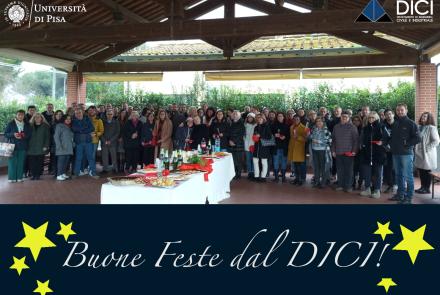Bando PRIN 2022 - AMORBIO

SCHEDA - PROGETTO PRIN 2022
PROGETTI DI RICERCA DI RILEVANTE INTERESSE NAZIONALE – Bando PRIN 2022
Start date: 6 Oct 2023
End date: 28 Feb 2026
Project funding: € 191.900,00
UNIPI quota: € 73.900,00
Call title: PRIN 2022
UNIPI role: Coordinator
DICI Team Leader: Maurizia Seggiani
Title: ROLE OF THE AMORPHOUS INTERPHASES IN BIOPLASTIC NANOCOMPOSITES (AMOR-BIO)
The AMOR-BIO project aims to deepen the understanding of the role of nanoscale interfaces—both between the amorphous and crystalline phases and between the amorphous phase and the nanofiller—in relation to the mechanical and barrier properties, as well as the aging and biodegradation behavior of the developed nanocomposites.
To this end, PLA-based nanocomposites will be prepared using nanofillers with different structures, dimensions, and morphologies (0D, 1D, and 2D fillers), which may be chemically modified to enhance compatibility and interaction with the polymer matrix. Thermal, mechanical, viscoelastic, and barrier properties, along with physical aging and biodegradation behaviour, will be thoroughly investigated. Modeling techniques will also be employed to predict the nanostructure of the PLA-based nanocomposites and to estimate key interfacial properties—such as the elastic modulus—in order to guide the design of materials with optimized macroscopic performance.
The ultimate goal is to identify how the overall properties of the nanocomposites are influenced by parameters such as the nanofiller content, type, size/morphology, and the strength of interaction between the polymer and the filler.
Other personnel involved: Sara Filippi e Giovanni Polacco
Involved partners: IPCF-CNR (sede di Pisa) e Università degli Studi di Bologna
-------------------------------------------
Titolo: RUOLO DELLE INTERFASI AMORFE NEI NANOCOMPOSITI A BASE DI BIOPLASTICA (AMOR-BIO)
Il progetto AMOR-BIO si propone di approfondire la conoscenza del ruolo delle interfasi su scala nanometrica – sia tra la fase amorfa e quella cristallina, sia tra la fase amorfa e il nanofiller – in relazione alle proprietà meccaniche, barriera, al comportamento all’invecchiamento e alla biodegradazione dei nanocompositi sviluppati.
A tal fine, saranno preparati nanocompositi a base di PLA impiegando nanofiller di diversa natura, dimensione e morfologia (riempitivi 0D, 1D e 2D), opportunamente modificati, se necessario, per favorire l’interazione con la matrice polimerica.
Le proprietà termiche, meccaniche, viscoelastiche e barriera, così come l’invecchiamento fisico e il comportamento alla biodegradazione, saranno analizzati in modo approfondito. Saranno inoltre utilizzate tecniche di modellizzazione per prevedere la struttura dei materiali su scala nanometrica e stimare alcune proprietà chiave dell’interfase – come il modulo elastico – al fine di guidare la progettazione di nanocompositi con caratteristiche macroscopiche ottimizzate.
L’obiettivo finale è comprendere come le proprietà macroscopiche del materiale siano influenzate da vari fattori, tra cui il tipo, la quantità, la morfologia del nanofiller e la forza dell’interazione con la matrice polimerica.
Altro personale coinvolto: Patrizia Cinelli e Sara Filippi
Partners coinvolti: IPCF-CNR (sede di Pisa) e Università degli Studi di Bologna




